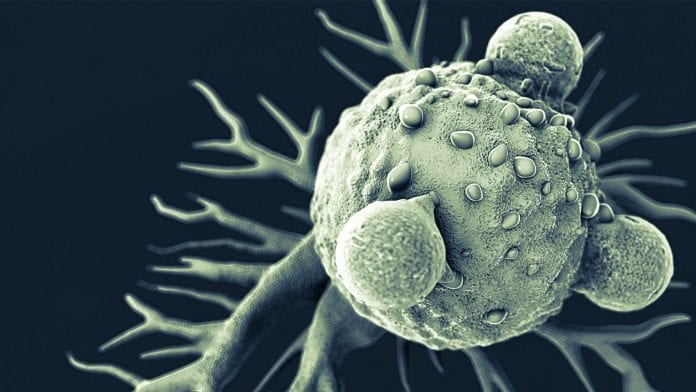
According to researchers from the University of Helsinki, Finland, cancer cells can be attacked with a ‘drug cocktail’ which can potentially help to fight breast cancer.
MYC, a gene with high cancer-initiating potential, is overexpressed in over 40% of breast cancers. While MYC programs breast cancer cells to build more macromolecules (anabolic metabolism) it also creates a metabolic vulnerability by making them more sensitive to a type of cell death known as apoptosis. Research Director Juha Klefstrom, PhD, from the University of Helsinki, has worked for a long time to exploit this apoptosis-sensitising effect of MYC in the battle against the cancer and specifically for this research, fight breast cancer.
How are researchers going to fight breast cancer?
Klefstrom and his research group found that, because of this vulnerability, cancer cells can be attacked with a ‘drug cocktail’ that includes the diabetes drug metformin and venetoclax, a BCL-2 protein inhibitor that can induce apoptosis in cancer cells.
The research group identified metformin in a search for drugs that could boost the apoptosis-inducing action of venetoclax. Venetoclax has been approved to treat certain leukaemia’s but not yet for the treatment of breast cancer.
Klefstrom explains: “This drug combo exploits specific metabolic vulnerabilities that high levels of MYC creates in tumour cells. Metformin and venetoclax, when given together, killed breast tumour cells in culture and blocked tumour growth in breast cancer animal models.
“Furthermore, the drugs efficiently killed authentic breast cancer tissue donated by breast cancer patients. The breast cancer samples were obtained fresh from surgeries performed in Helsinki University Hospital.”
The quest to stop the tumour from returning
Nevertheless, the researchers discovered that the treatment of metformin plus venetoclax only kept tumours in check if the mice with implanted breast tumours were actively being treated with the drugs. Once the treatment was stopped, the tumours grew back.
The study demonstrated that tumours were initially filled with tumour-killing lymphocytes; however, after the treatment they largely vanished and the remaining killer cells expressed PD-1, a marker of immune cell exhaustion.
To help the immune cells better fight the tumour, the researchers created a new treatment strategy. First, they hit breast tumours with apoptosis-inducing drugs metformin and venetoclax to decrease the tumour size and to wake up killer lymphocytes.
After the primary tumours were surgically removed, the mice were then treated with a triple combination: metformin, venetoclax and a PD-1-targeted antibody, which is used in immunotherapies to keep killer cells active long-term.
“With this combination the survival of mice carrying implanted tumours was extended dramatically in comparison to mice that were treated with only single or double combinations”, Klefstrom adds.
Klefstrom highlights that this is a wonderful example of a translational study fundamentally aimed at taking research from bench to bedside.
Utilising diverse collaboration to fight breast cancer
The first author of the study Dr Heidi Haikala notes: “It’s quite amazing how we’ve been able to bring a discovery from the lab bench all the way to the doors of the cancer clinics within the time frame of one PhD project. We are very excited about our findings and hope that they will translate to benefit breast cancer patients.”
“This is a great example of how scientists in academia, leveraging highly specialised tumour models and applying their unique insights, can contribute to the discovery of potential new treatments for people with cancer. It is also a testament to the great research being done in smaller countries like Finland,” adds Joel Leverson, Ph.D., a Senior Scientific Director at AbbVie and one of the senior authors in the study.
Klefstrom concludes: “We finally have a drug combination that efficiently exploits MYC’s apoptotic function and most importantly, these drugs can be tested in the clinic in real patients. We are currently working hard towards this next step.”









